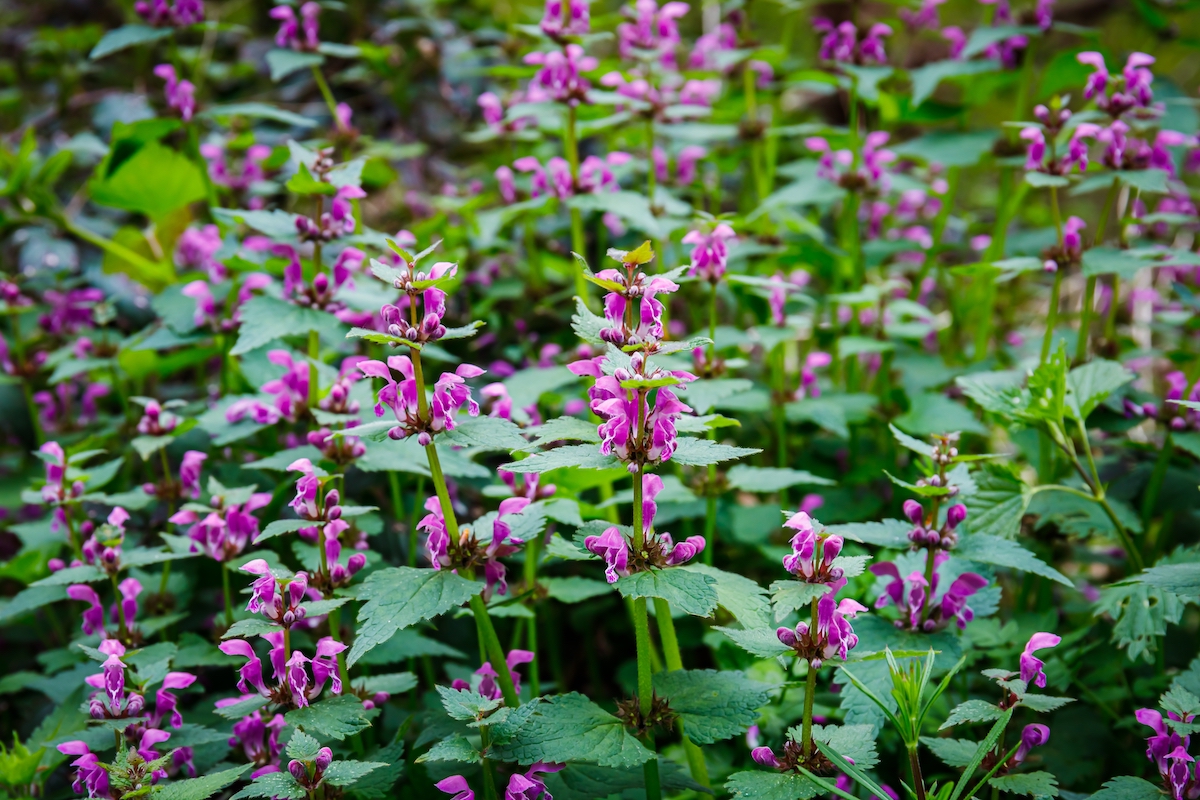
This rocky front entry has little to no grass, using various groundcover plants instead.
Low-Maintenance Ground Covers
The Almanac Garden Planner - Use It Free for 7 Days!
Plan your 2025 garden with our award-winning Garden Planner.
ADVERTISEMENT
We have a California native Lippia nordiflora ground cover. It has little pink(ish) flowers and is very low maintenance, we cut it back once a year. We have not had much success with creeping thyme or creeping(?) rosemary. We are in planting zone 9b.
I'm in zone 9b central California and I grow creeping thyme and rosemary just fine. I'm slowly learning how not all zone 9B's are the same.
What plants are deer resistant and grow in a shady area?
We bought a house in North Carolina this past summer, close to the Virginia border, and away from the coast. The spring we had beautiful pink flowers, which appear to be creeping phlox. I noticed a small plant at the edge of the phlox appears to be dying. How do we contain creeping phlox so that it doesn’t smother other plant roots, and grows only where we want it?
Hi, Cindy,
You might try edging—the “strip” type bands that you set in ground at ground level. Perennials like ground covers are known for sleeping in year one (not growing much), creeping in year two (stretching, so to speak), and leaping in year three (meaning spreading). You want to effectively block the root spread.
Another alternative would be to dig it up every year.
Let’s see if readers of this page have other ideas…
Planted thyme w/pink flowers last year in Pacific Northwest. This year it just sat slightly grown. We read that sandy soil is best. We distributed sand. It plumped up and grew fast. A fungus appeared. We sprayed. Long-cold winter went to summer days at high heat. We watered lightly was not sure to wet too much. Now, it is browning/drying out in several spots. Should I have watered more? Trying to save it. Bees love it.
Hey Jim, I planted Lemon Thyme in Ohio. They are currently about 8 inches in diameter but I trim them in the fall. BTW, I also planted them in the fall. We get a fair amount of rain here but not quite as much as the Pac NW. About 40 inches per year where I am located. We also have high humidity. Typically, above 55%. I made a rock garden and mixed the already existing soil with sand and then poured the mixed soil back on the ground between the rocks. I included some succulents between the rocks for interest. Since planting 2 years ago the thyme and succulents have thrived. They have survived 2 winters at temps as low as 10 degrees. I do not water them. I let the weather do that. I planted them along a concrete walk way and trained them by trimming them to grow between the 18 inch concrete step stones. I let them trail in to the rock garden too and only trim them there if the encroach on the succulents. They are planted on the North East side of the house and spend half of the day in direct sunlight, then some partial shade and then full shade depending on the position of the sun. They give a beautiful lemony scent and can withstand the occasional crushing under foot. I suspect the fungus might be from too much water. Try adding more sand for drainage. They may be suffering from root rot. They can take the heat and the cold. I have found that controlling the water is key. Maybe try not watering them and let the weather do that. Maybe the combination of more sand and less help with water will help your plants thrive too. Hope this is helpful.
I live in Northwest South Dakota. I need a good fast-spreading ground covering for our backyard/patio area. The top layer is a stamped patio. Then there are large boulder-type rocks to form three wall levels. We need a good fast-growing ground cover to put in several spaces in between the rocks of each layer. I also would love to add some ground cover at the lowest level along with larger flowering plants. This area is shaded by trees in the summer but it does get the morning sunshine for about 4 hours.
Here in Vacaville, Ca. We are growing Lipia Nordiflora it is about 4-6” high spreads like ivy and has little pink flowers and is native to the southwest. Love the way it cascades over brick.
What is a good ground cover for an area mostly shaded. Area is adjacent to wooded area that prevents sun most of the summer. It gets maybe a couple hours of sun daily.








 Image: Blue Fescue
Image: Blue Fescue Image: Juniperus horizontalis ‘Wiltonii’
Image: Juniperus horizontalis ‘Wiltonii’









